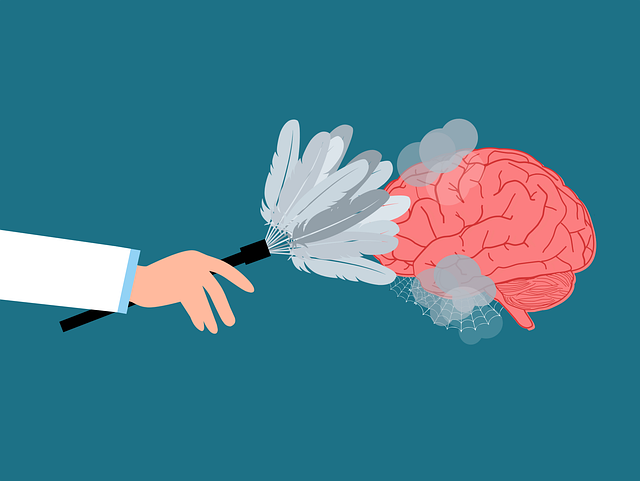Greenwood Village Terminal Illness Therapy tackles healthcare provider burnout through holistic strategies, including emotional intelligence training, community outreach, and cultural competency. They prioritize well-being by offering workshops, seminars, and flexible work arrangements to create supportive environments, reduce stress, and enhance compassion in caring for patients with terminal illnesses, setting them as a leader in the field.
Healthcare provider burnout is a growing concern, impacting not just individual well-being but also patient outcomes. This article explores strategies employed by Greenwood Village Terminal Illness Therapy to combat this issue. We delve into the understanding of burnout among healthcare providers and present effective prevention tactics fostered at Greenwood Village. By examining their supportive environment initiatives, we offer insights that can benefit various healthcare settings, ultimately enhancing provider resilience and patient care.
- Understanding Burnout Among Healthcare Providers
- Strategies to Prevent Burnout at Greenwood Village Terminal Illness Therapy
- Fostering a Supportive Environment for Provider Well-being
Understanding Burnout Among Healthcare Providers

Burnout among healthcare providers is a growing concern, with high stress levels and demanding work environments contributing to physical and emotional exhaustion. This phenomenon is particularly prevalent in professions like medicine, where long hours, heavy caseloads, and high patient expectations can take a toll on well-being. At Greenwood Village Terminal Illness Therapy, we recognize that addressing burnout proactively is essential to maintaining a healthy and effective healthcare workforce.
Understanding burnout involves recognizing its signs—including physical fatigue, cynicism towards patients or work, and decreased professional accomplishment—and its impact on both individuals and the broader healthcare system. Strategies for prevention focus on fostering resilience through practices like emotional intelligence, which equips professionals with skills in self-awareness, empathy, and stress management. Implementing community outreach programs can also mitigate burnout by promoting a sense of belonging and support within healthcare teams, while prioritizing emotional regulation techniques helps providers manage workplace pressures and maintain work-life balance.
Strategies to Prevent Burnout at Greenwood Village Terminal Illness Therapy

Greenwood Village Terminal Illness Therapy prioritizes healthcare provider burnout prevention through a multi-faceted approach. Recognizing that mental illness stigma reduction efforts and cultural competency training are crucial for creating supportive environments, they organize workshops and seminars to educate staff and patients alike. By fostering an understanding of diverse perspectives and promoting empathy, Greenwood Village aims to minimize instances of discrimination and enhance patient care.
In addition to these initiatives, the therapy center has implemented a robust community outreach program to connect with individuals who might be hesitant to seek help due to fear or stigma. This proactive strategy not only increases accessibility but also ensures that patients receive holistic support tailored to their unique needs. Through such comprehensive measures, Greenwood Village Terminal Illness Therapy strives to prevent burnout among its providers while offering compassionate care to those facing terminal illnesses.
Fostering a Supportive Environment for Provider Well-being

In creating a supportive environment for healthcare provider well-being, institutions like Greenwood Village Terminal Illness Therapy can play a pivotal role in burnout prevention. This involves implementing policies and practices that prioritize mental health, offer flexible work arrangements, and encourage open communication. By fostering a culture of support, hospitals and clinics can enhance job satisfaction and reduce stress levels among their workforce. Additionally, integrating Trauma Support Services and Healthcare Provider Cultural Competency Training into the organizational fabric ensures professionals feel valued and equipped to handle challenging situations effectively.
Self-Awareness Exercises are another critical component in cultivating a resilient work environment. Encouraging providers to engage in regular self-reflection can help them recognize signs of burnout early on, enabling timely intervention. These exercises promote personal growth, improve coping mechanisms, and enhance the ability to manage stress, ultimately contributing to a healthier, more sustainable workforce. Such initiatives align with best practices in employee wellness and are essential for maintaining high-quality patient care.
Burnout among healthcare providers is a pressing issue, but through proactive strategies like those implemented at Greenwood Village Terminal Illness Therapy, it can be effectively prevented. Fostering a supportive environment that prioritizes provider well-being is key to maintaining high-quality care. By understanding the risks of burnout and adopting strategies that promote work-life balance, resilience, and open communication, healthcare organizations can create a sustainable and healthy workforce.














